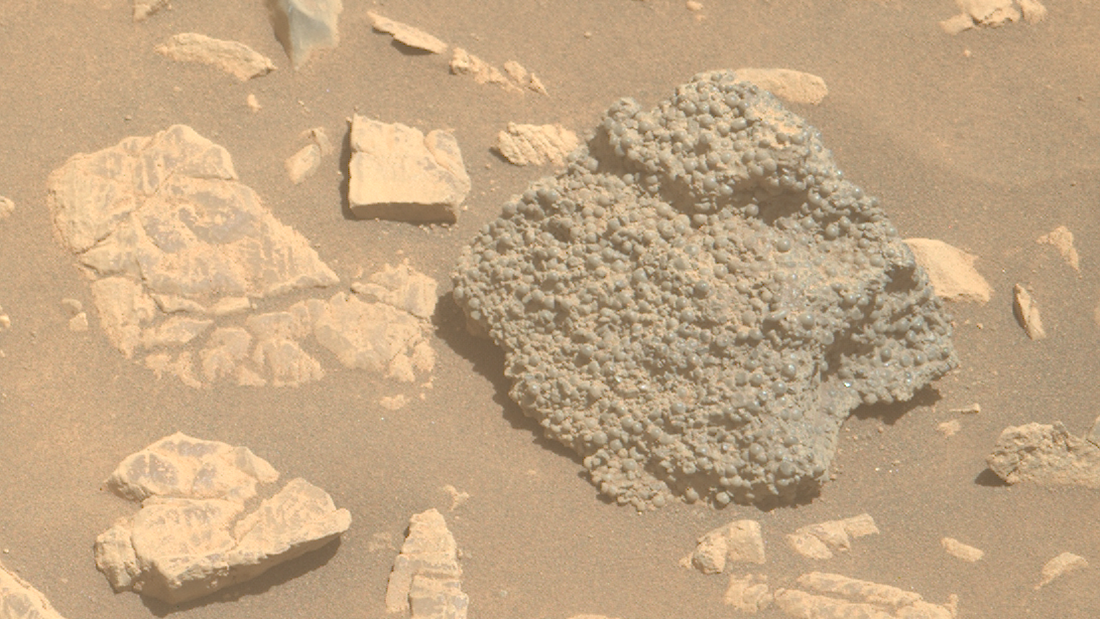NASA’s Perseverance Rover has stumbled across a rather intriguing rock on the rim of the Jezero Crater on Mars. The rock, which was closely examined and photographed by the rover, appears to be made up of hundreds of strange, spherical-shaped objects, dubbed “blueberries” when they were previously seen on the Red Planet.
ADVERTISEMENT
Just over two weeks ago, the rover arrived at Broom Point at the lower end of the Witch Hazel Hill area, itself on the Jezero Crater rim. From orbit, NASA identified a series of light and dark-toned bands, and sent the rover to investigate.
“Orbital views of Witch Hazel show layered materials that likely date from a time when Mars had a very different climate than today,” NASA explained, prior to the rover’s ascent. “Those views have revealed light-toned bedrock similar to what was found at ‘Bright Angel,’ the area where Perseverance recently discovered and sampled the ‘Cheyava Falls‘ rock, which exhibits chemical signatures and structures that could possibly have been formed by life billions of years ago when the area contained running water.”
While at the Witch Hazel Hill area (which, FYI, sounds like it should be a level in Sonic the Hedgehog) and taking samples, NASA spotted the unusual rock nearby. Naming the rock St. Pauls Bay, the team found that it was made up of hundreds of dark gray spheres, millimeters in size.
“Some of these occurred as more elongate, elliptical shapes, while others possessed angular edges, perhaps representing broken spherule fragments,” Alex Jones, Ph.D. candidate at Imperial College London, shared in a NASA update. “Some spheres even possessed tiny pinholes!”

St Pauls Bay rock on Mars, captured on sol 1444 (March 13, 2025).
There are a few possible explanations for this unusual rock, with similar formations being spotted in Yellowknife Bay at Gale crater by Curiosity, and popcorn-like textures being seen by Perseverance in the Jezero Crater.
“In each of these cases, the spherules were interpreted as concretions, features that formed by interaction with groundwater circulating through pore spaces in the rock,” Jones added. “Not all spherules form this way, however. They also form on Earth by rapid cooling of molten rock droplets formed in a volcanic eruption, for instance, or by the condensation of rock vaporized by a meteorite impact.”
ADVERTISEMENT
The unusual appearance of the rock may also be down to concretions, but it is a little more unusual than the others, as it is a “float rock”, meaning that it is out of place with its surroundings. The team believe it may be linked to the dark-toned bands seen from orbit, and are now examining the geological context around the find in order to determine how it was formed.
Source Link: NASA's Perseverance Rover Finds Strange And Out-Of-Place Spherules On Mars